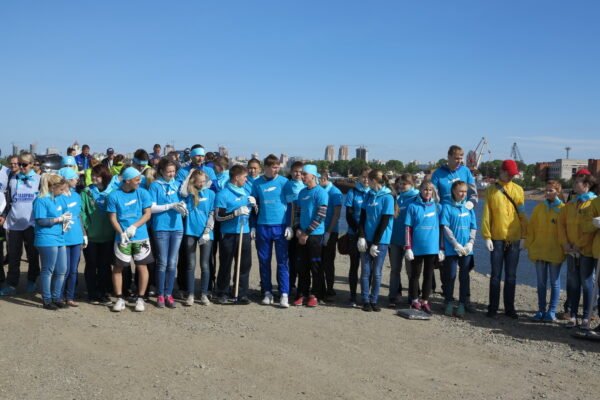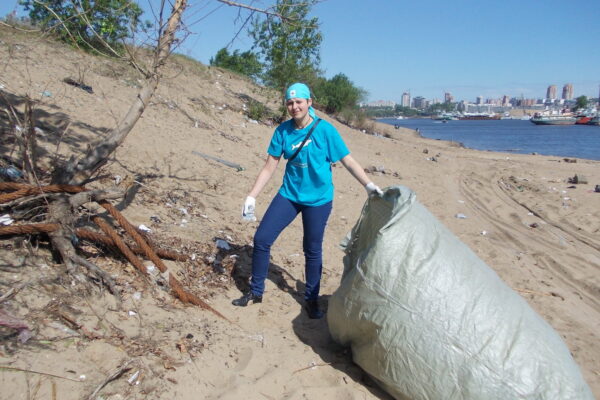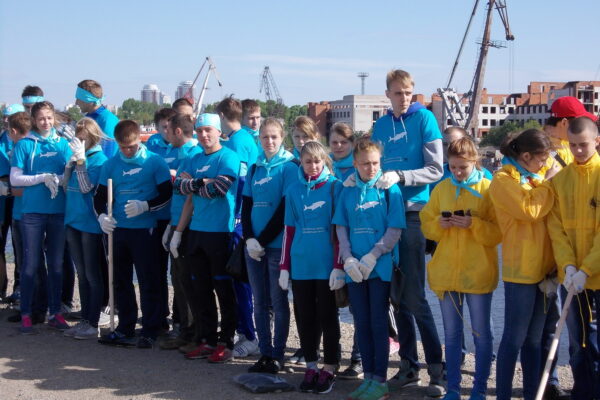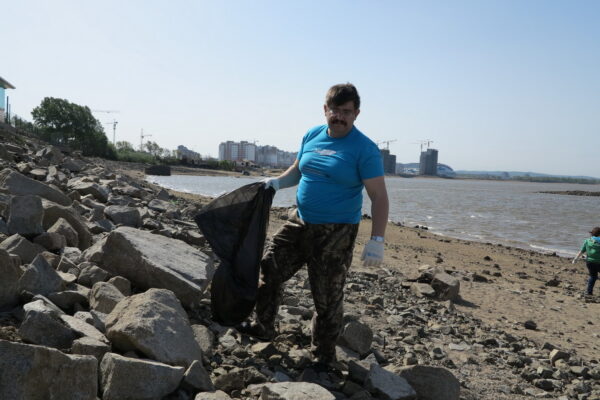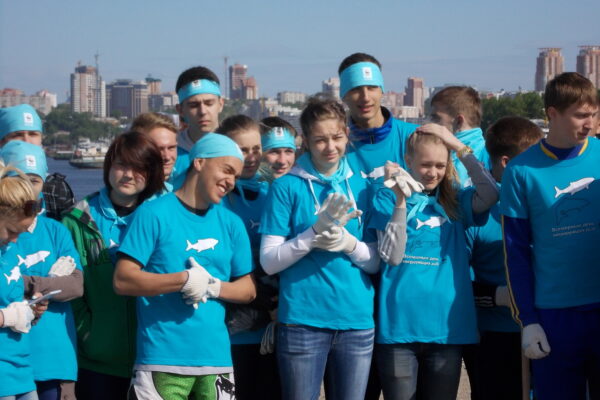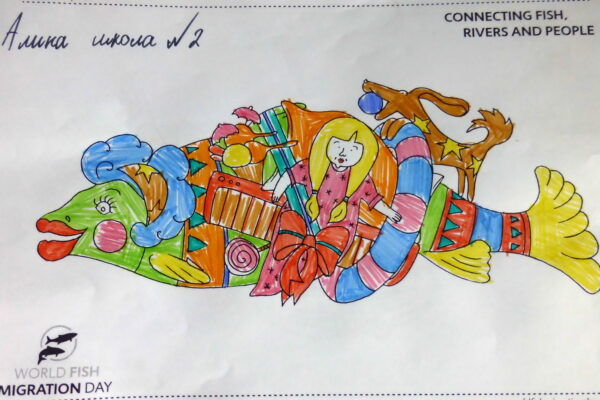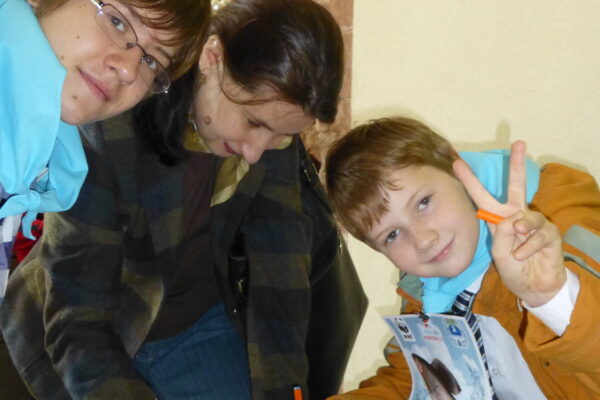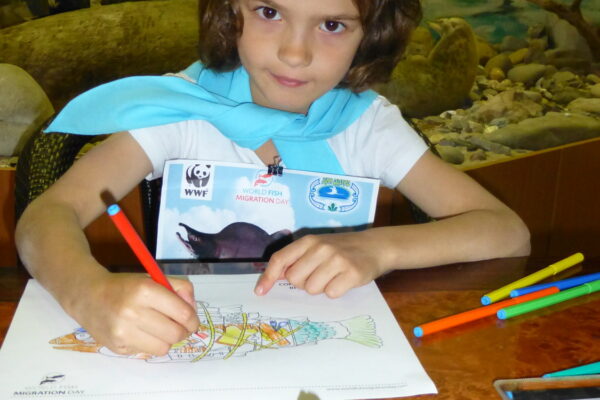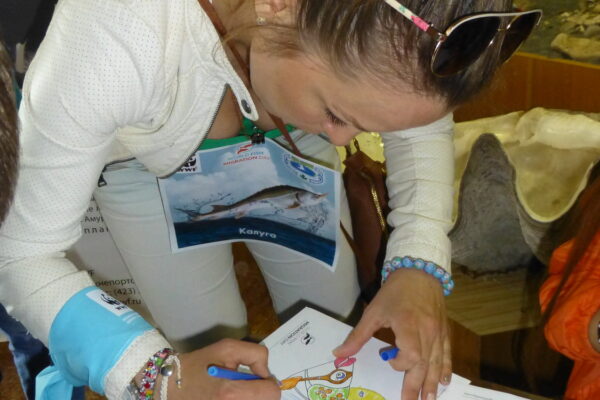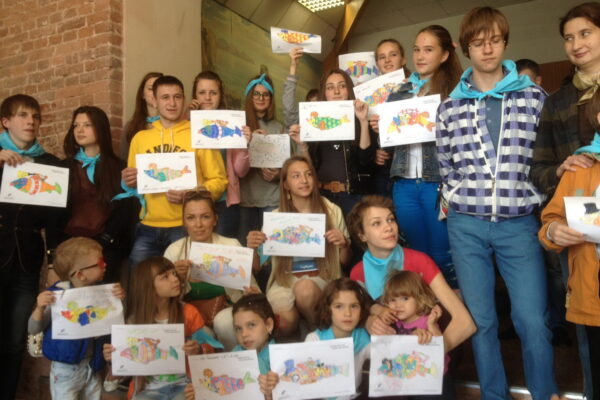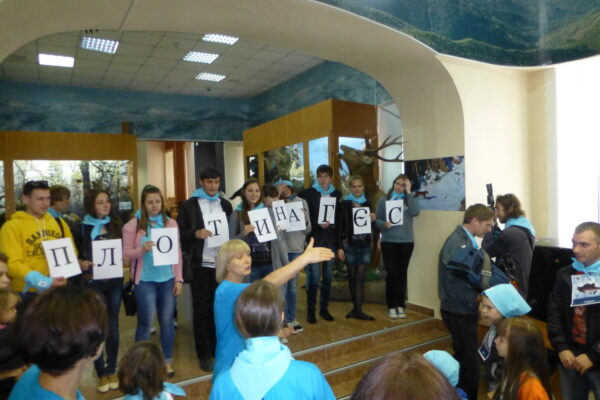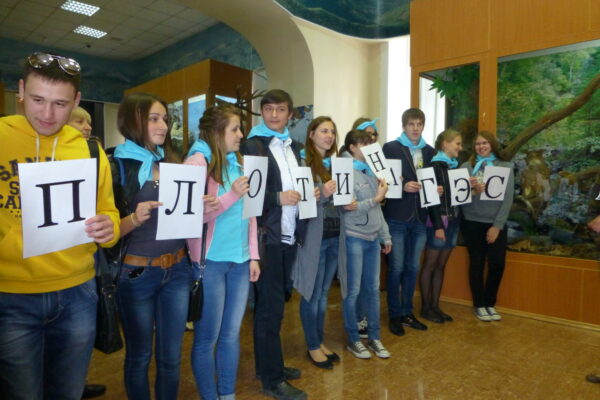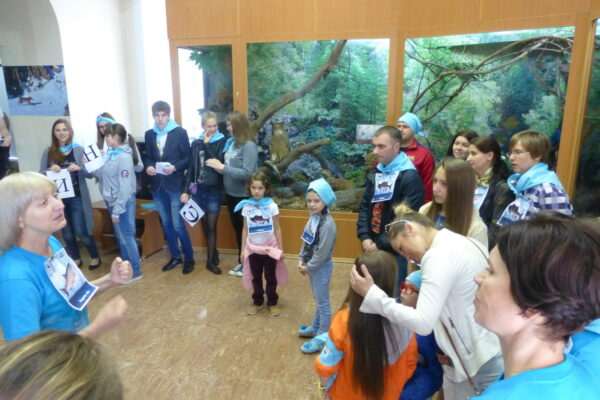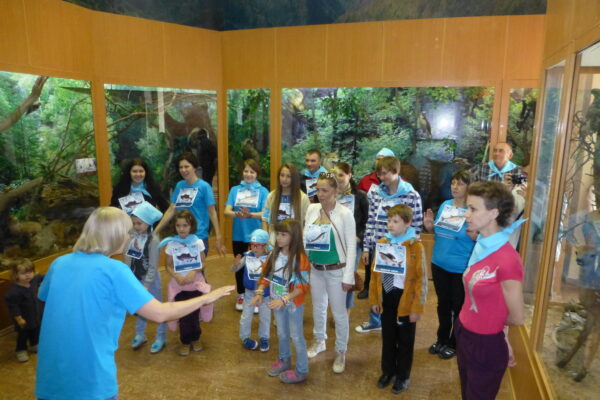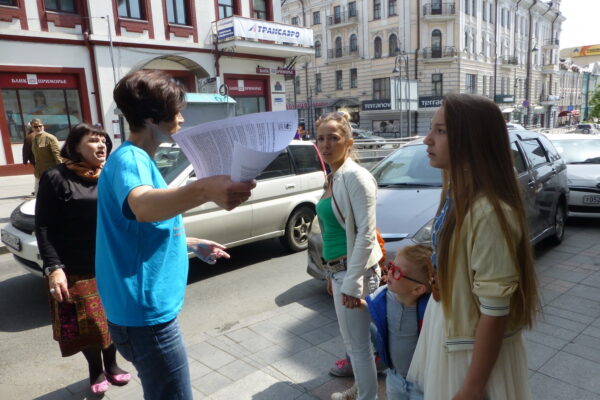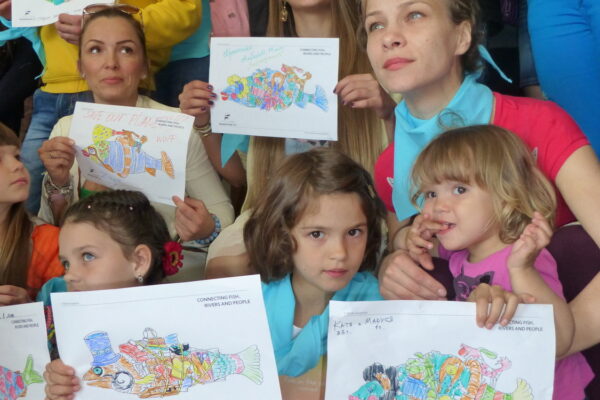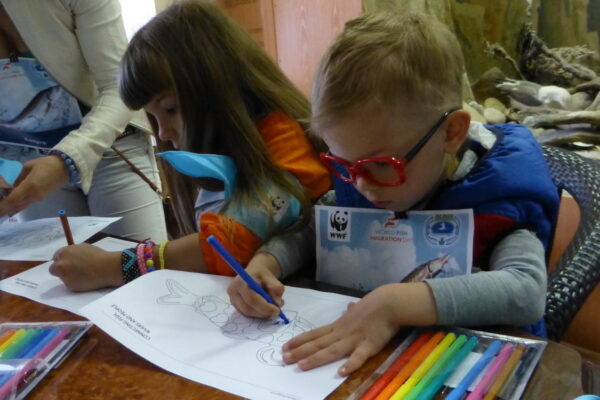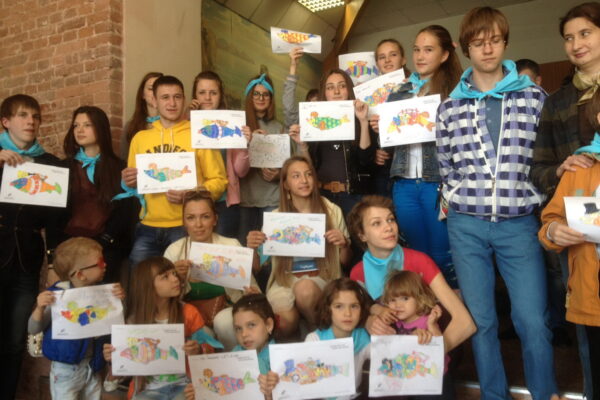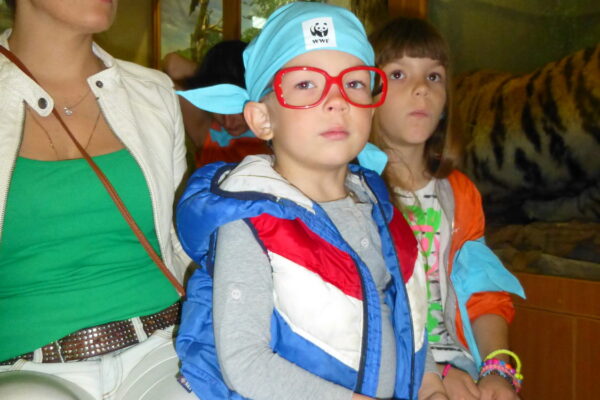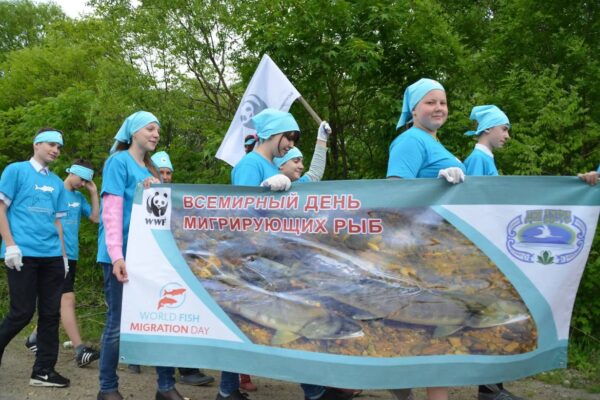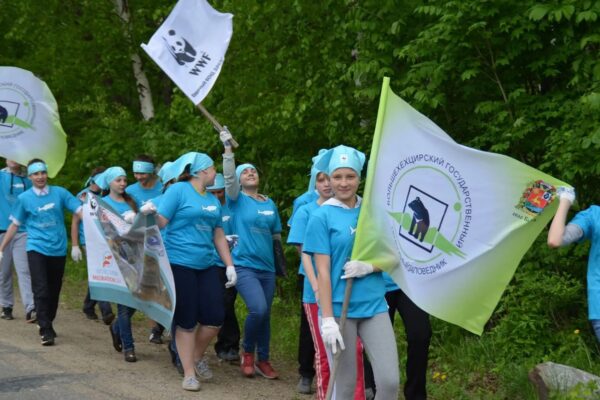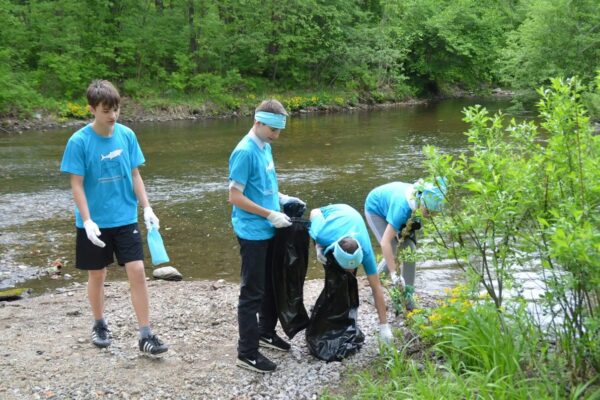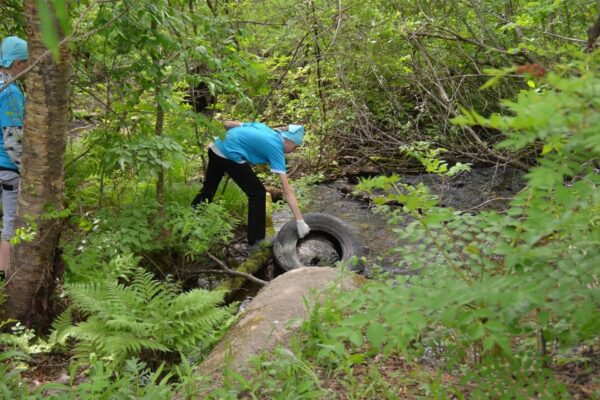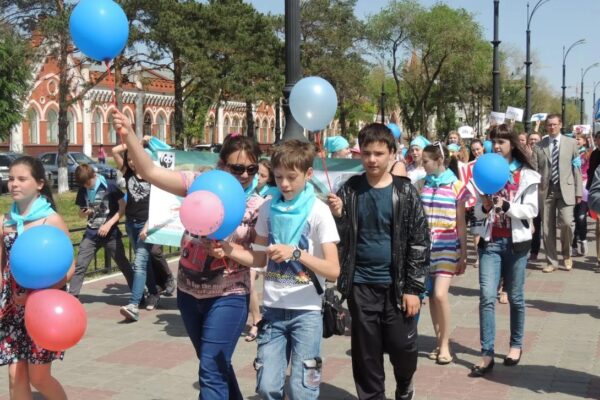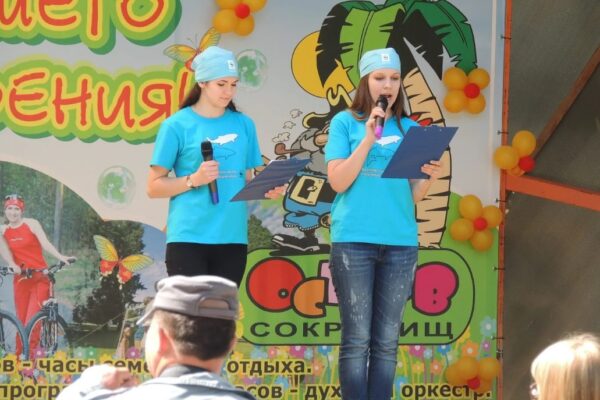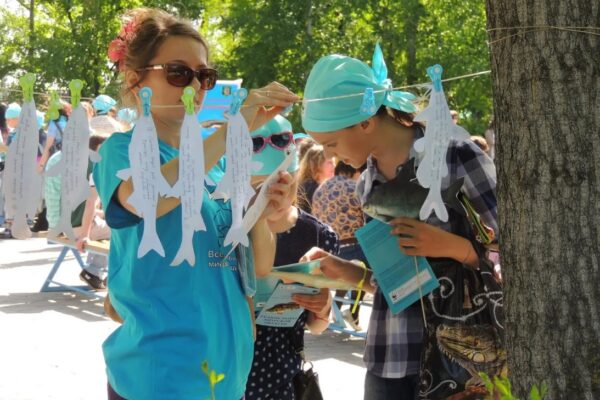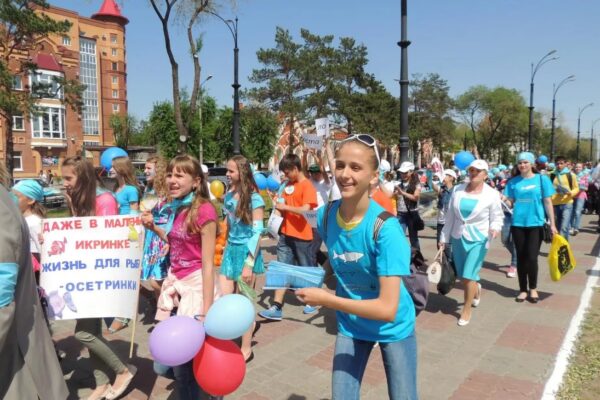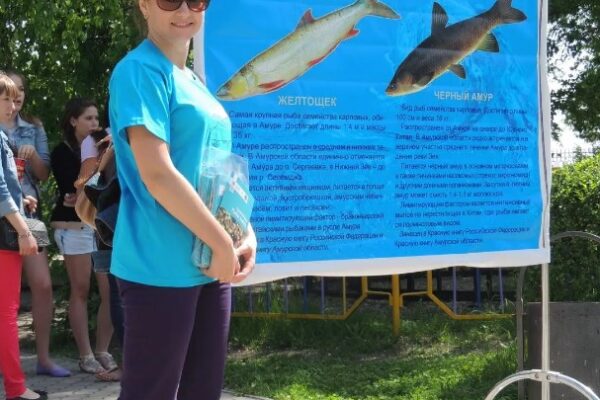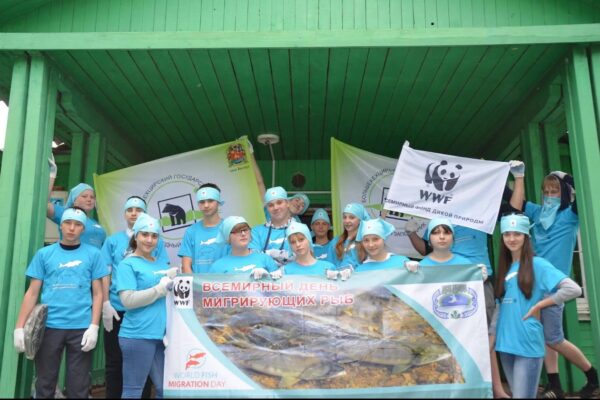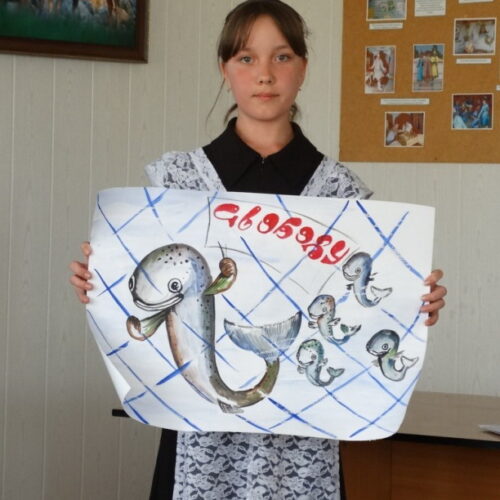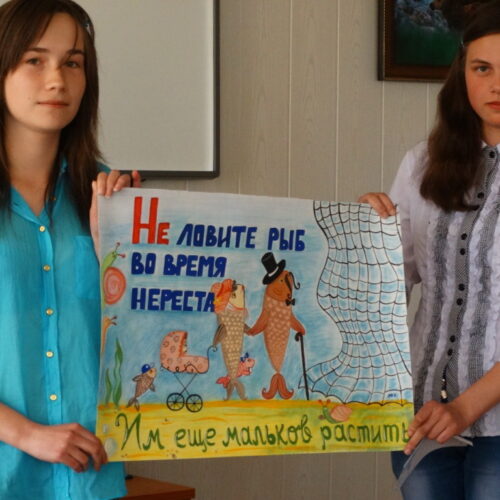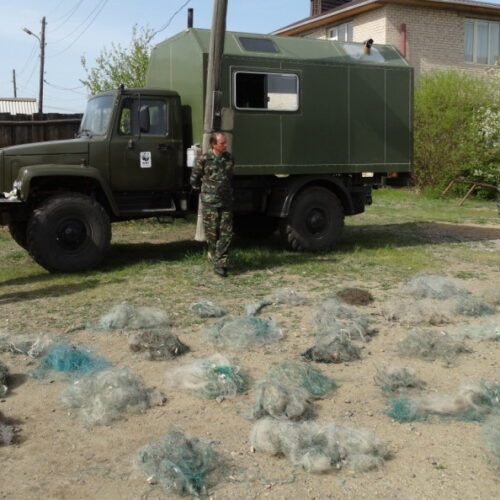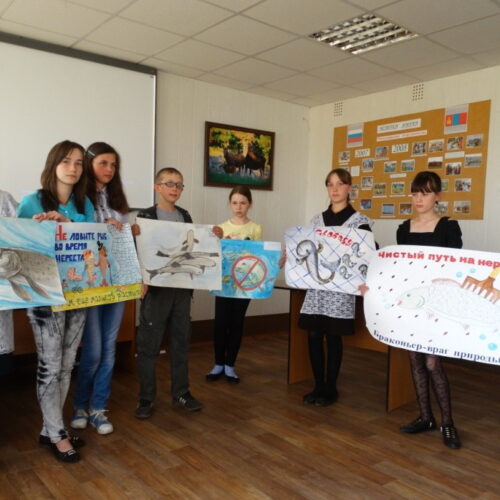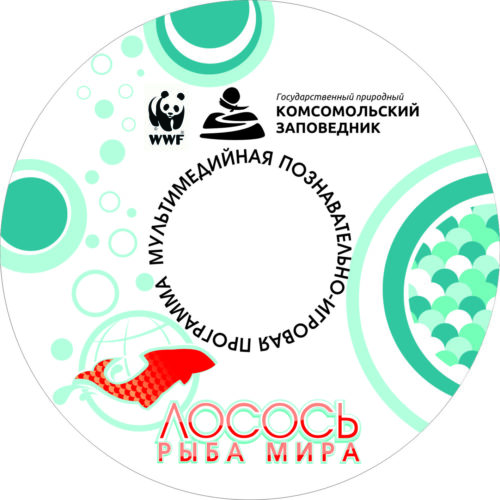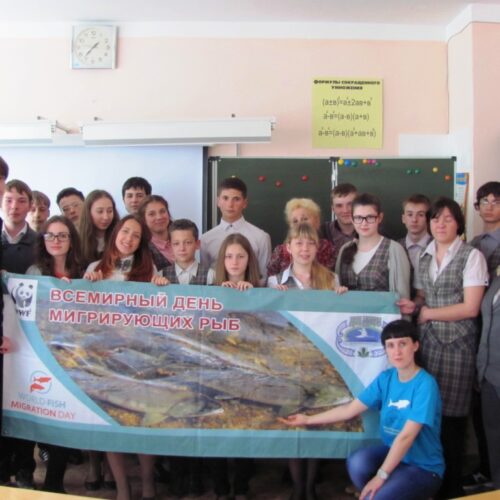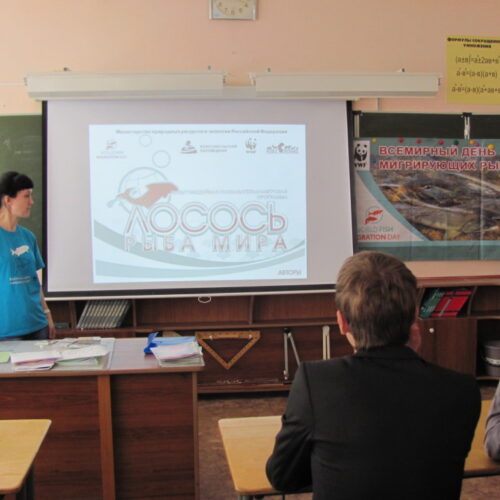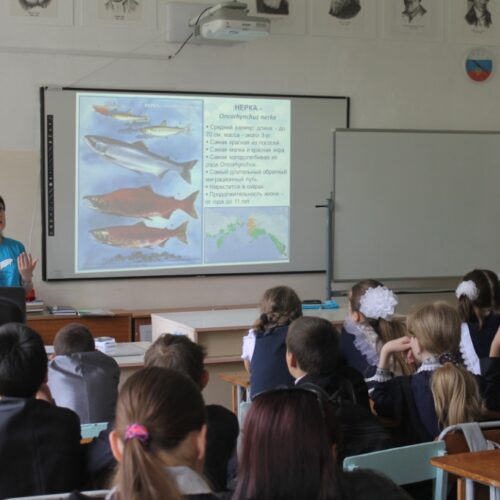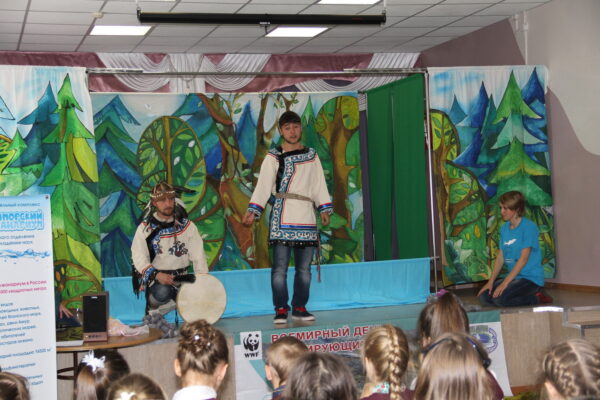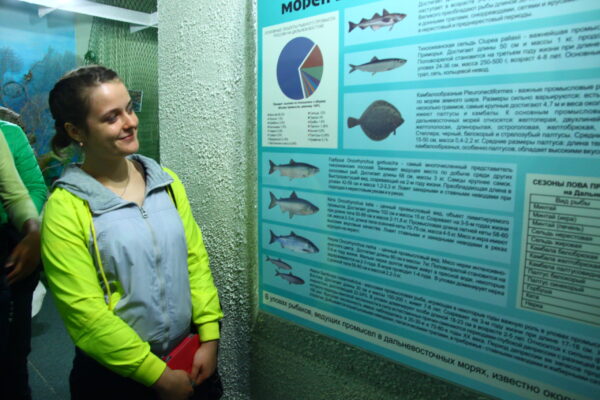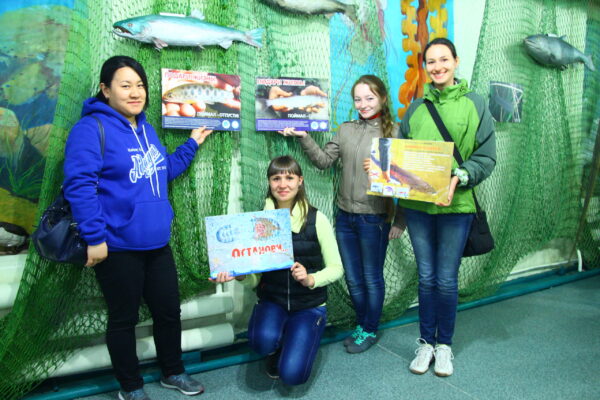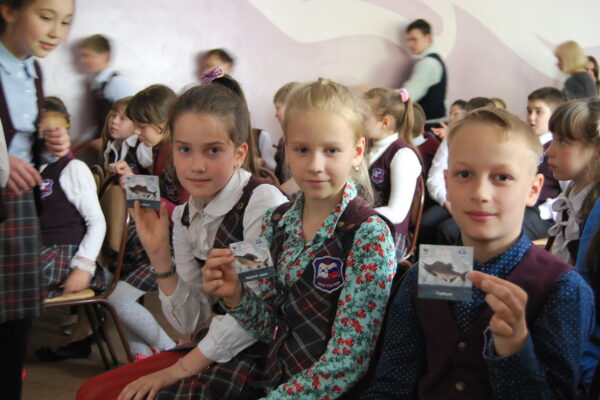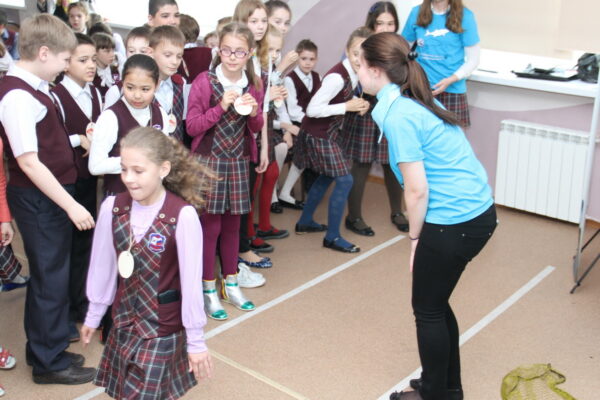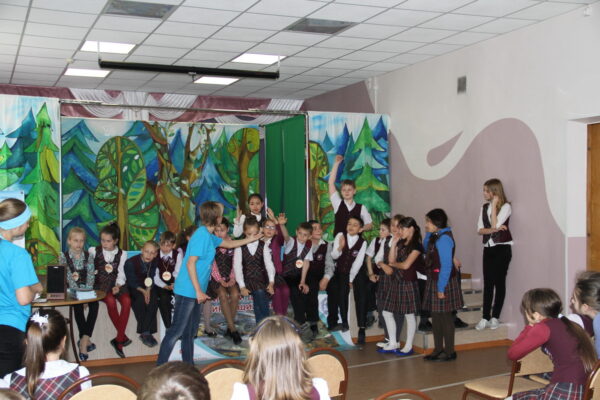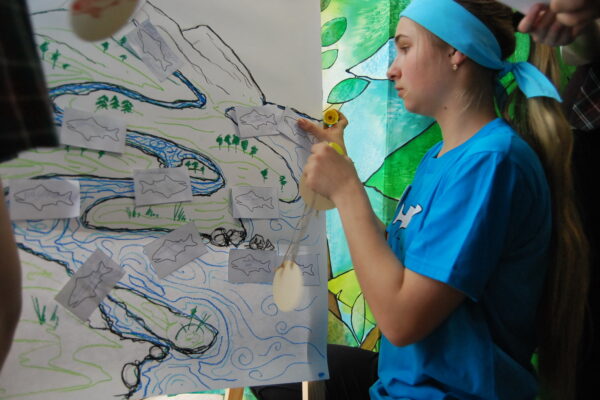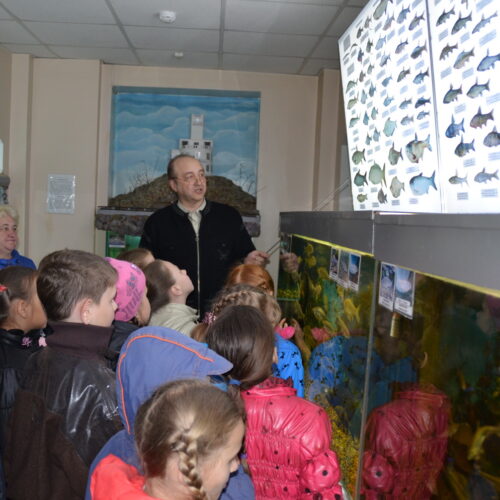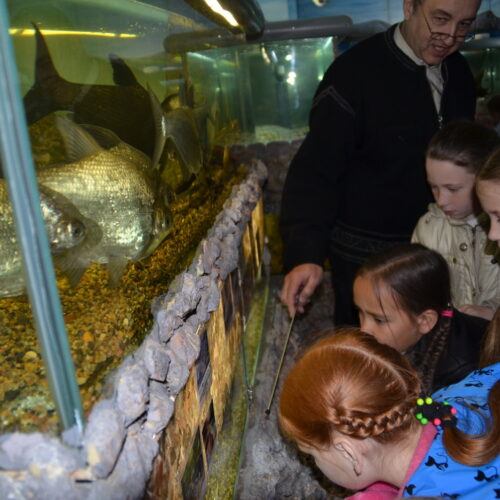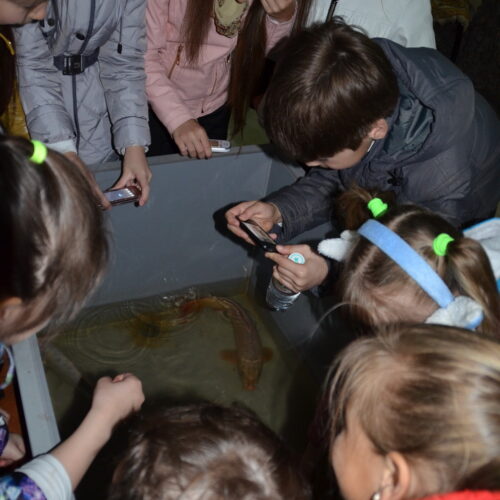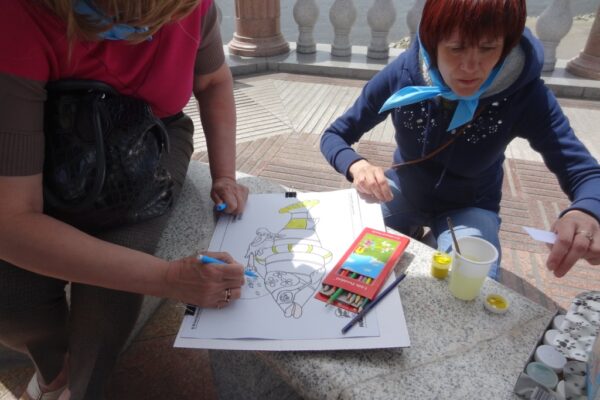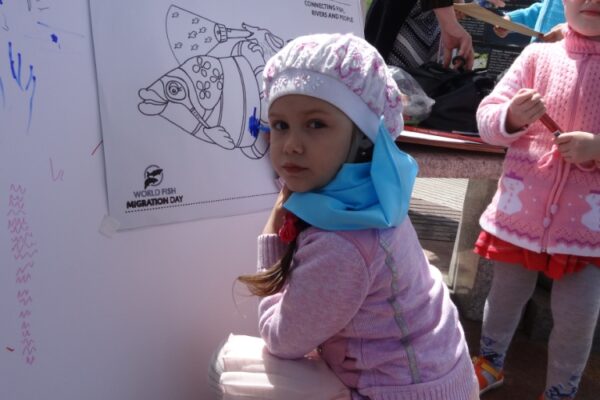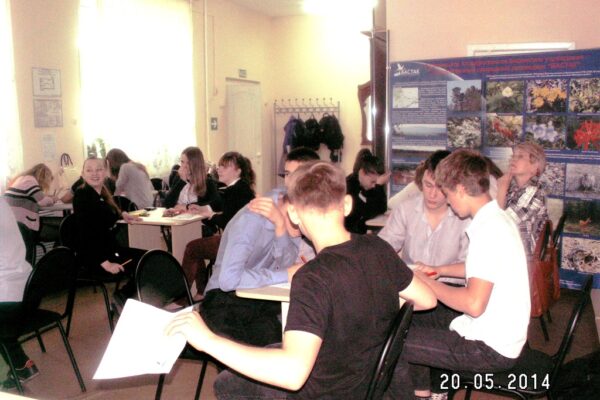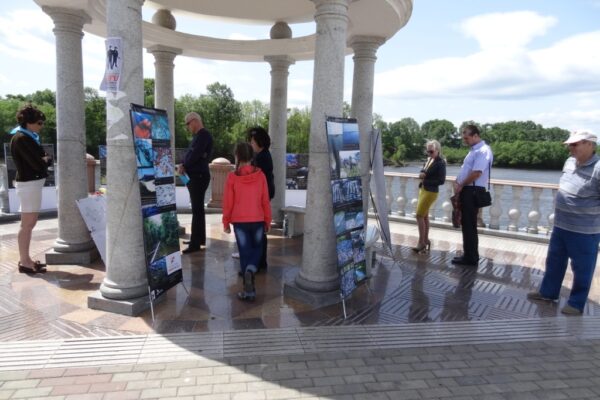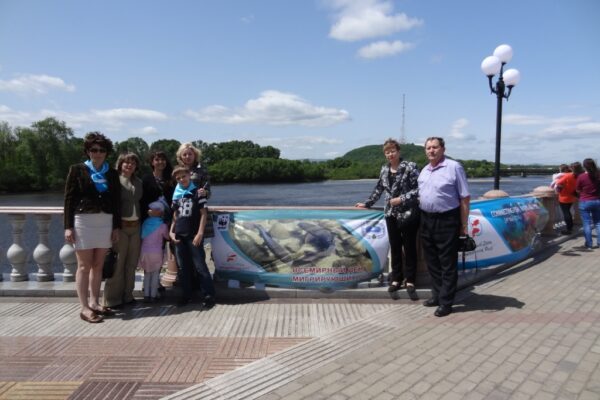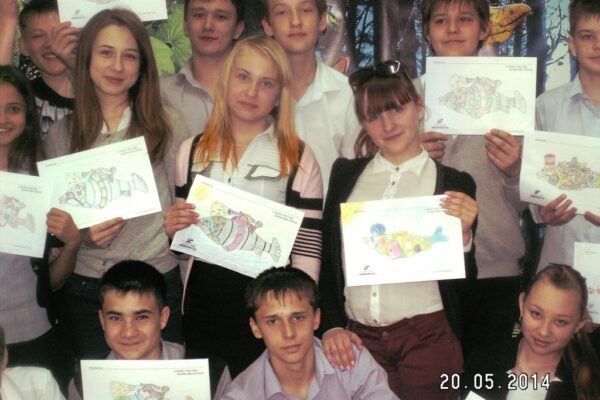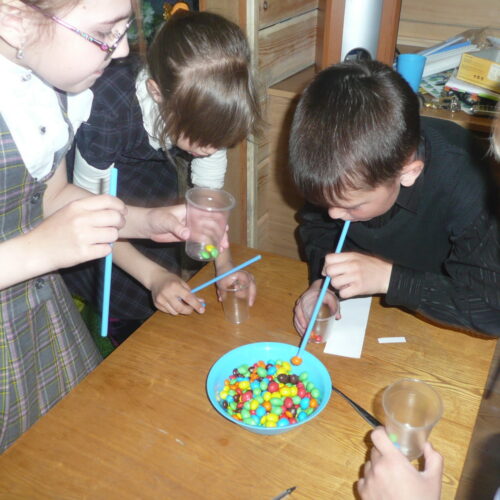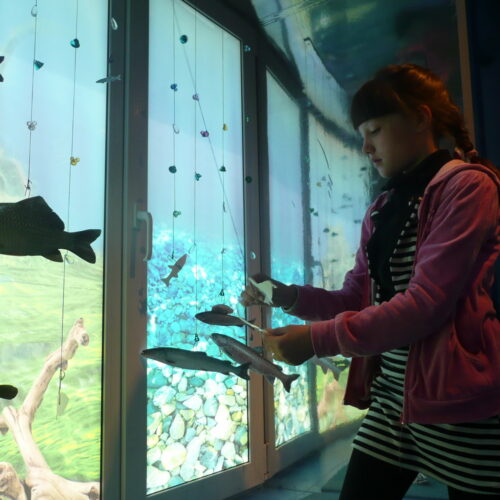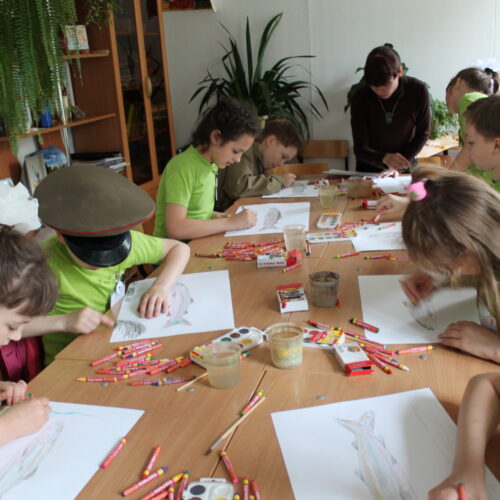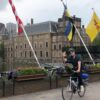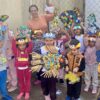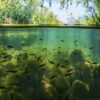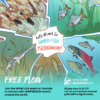Video made by Василий Солкин / WWF Russia Amur branch @WFMD2014 in Vladivostok
WWF Russia Amur branch love the idea of celebrating World Fish Migration Day. We work in 5 provinces within the Amur River Basin together with 21 federal protected area (nature reserves and national parks), 5 provincial directorates of protected areas and 20 NGOs. WWF Russia Amur branch and its partners declared the 2014 the Year of Amur.
Our main goal is to keep the Amur River free flowing, restore populations of rare and migratory fish stocks. Therefore WWF Russia Amur branch was the organizer and coordinator of the World Fish Migration Day in the Russian Far East. Was prepared and published a booklet “Amazing Amur Fish” (1500 copies), stickers with fish images (5000 copies), banners (20 pieces), bandanas (3000), T-shirts (500) with the emblem of WFMD. All the products have been distributed to our partners.
On May 24 at a press conference in Vladivostok devoted to the World Fish Migration Day WWF talked about all the participants and the events in Amur basin and thanked partners for their proactive in preserving the Amur River free flowing.
“WWF Netherlands started to celebrate this day in 2003. But local festivals and holidays have not played such a role, as the World Fish Migration Day should play being celebrated all over the Planet – said Svetlana Titova, Protected Areas project coordinator at WWF Russia Amur Branch. – In Russia, two major tributaries of the Amur River – Zeya and Bureya are already dammed by giant HPPs, and several large dams are built on the Songhua River in China. Dams are not only the reasons for the migratory fish disappearance, but they are also the reason for river pollution.Everyone may contribute to the fish protection, we just need to understand that the river – it’s not a place for waste, but someone’s home in the first place.”
“No way, we’re busy and have our own plans!” – this was the first phrase of citizens passing by the door of the Arsenyev Museum in Vladivostok and bumping into polite girls dressed in uniform, symbolizing WWF and the World Fish Migration Day. But after a short conversation, Vladivostok citizens decisively changed their plans, and having got festive bandanas rushed into the Museum’s building.
“We intentionally refused to invite the audience in advance and risked to check if random citizens walking along the central streets of Vladivostok city are interested in the fate of migratory fish – says Svetlana Titova – It turned out that the interest of the city people in Kaluga and salmon has met WWF expectations because finally there were no room at the Museum’s hall for those wishing to take part in the celebration of the new Day for us.”
Seeing underwater documentary of great mystery of salmon and chum migration accompanied by competent and detailed comments of migratory fish expert Anatoly Sementchenko, the head of the biological department of the Aquarium of the Far Eastern Branch of the Russian Academy of Sciences, the participants of the event turned into a salmon for a few minutes themselves. And, as part of an interactive game experienced what the is a dam built by fish migration routes.
Then there was a competition for the best colored fish and a quiz, which showed that children know about coastal fish no less than adults.
“Recently we studied salmon migration at the institute – says Alina Solomonova, the student of ecological department. – We got here quite by an accident, but it was interesting to see the movie, learn a lot and draw. We’re already students, and it is been quite a while since the last time we draw or painted anything!”
In general, we can surely admit that the first pancake turned out not a failure. And new holiday in the Russian Far East has a great future. We believe, that over the years, it becomes as popular and traditional as Vladivostok Tiger Day.
Fish Festival
WWF Russia – Amur Socio-Ecological Union
Fish Festival organized by Amur Socio-Ecological Union and “Bars” student nature protection brigade in Blagoveschensk city, Amurskaya Province.
On May 24 the citizens of Blagoveschensk city who decided to spend a nice weather weekend walking along the Amur River bank were surprised by an unusual performance: the Amur fish “flock” was moving right along the central waterfront. All fish species that inhabit the Amur River, large and small, in fabric and paper were “migrating” in front of astonished citizens. However, this time they were “floating” in the hands of the students from Blagoveshchensk city schools and Sadovoye village. That is how children with support of “Bars” student nature protection brigade and Amur Socio-Ecological Union (AmurSoES)
During this parade kids dressed up in blue T-shirts and bandanas with the symbols of the holiday, distributed numerous booklets telling about rare and migratory Amur fish.
After the parade the concert with performances of artists and creative teams took place in the city park of Blagoveshchensk. The contests on the best knowledge of the Amur fish, best fish suit competition and pavement drawing contest was held. Here children and adults could guess about the inhabitants of the Amur River, make a bracelet with a rare fish picture or have a fish tattoo painted on the face. Special information stands were installed with the detailed information on the Amur Fish for holiday guests.Video made by AmurSEU @WFMD2014 Festival in Blagoveschensk, Amur River Basin, Russia
Spawn Migration Day in Craneland
Viacheslav Obrazov, State reserve, ФГБУ “Мосрыбвод”
Preparatory work for the reintroduction and habitat of fish in the river Kostinka, Russia, Moscow region. Clearing the riverbed for spawn migrafion native species. May, 17, 24, Russia.

Sokhondinsky State Nature Reserve, Kyra village, Zabaikalsky Province
Anna Malyshev WWF Russia
During April the staff of the nature reserve conducted series of presentations in Kyrinsky district of Zabaikalskaya Province (Trans-Baikal Territory) on “Reproduction and development of fish in the Amur basin”, which focused on fish species found in the rivers of the province such as salmon, lenok, Red Book taimen and grayling. More than 200 students received new information.
“Blue way to the spawning grounds” poster contest was conducted on May 24 in the administrative building of Sokhondinsky Nature Reserve as part of activities of the World Fish Migration Day.
The contest united the students of Kyrinsky high school and children’s art school and pupils of “Crossroads” social rehabilitation center. While speaking about their posters children told about fish life, as well as about its breeding peculiarities. Yana Kurbatova and Nastya Ivanova, the winners in the older age category in their presentation covered the subject of the negative human impact on the spawning fish. Other defenders of posters raised issues related to poaching, including fishing with nets during spawning period. Students read poems about the need to protect fish and not only during this crucial period.
Photo: A. Staritsyna
Komsomolsky Nature Reserve, Komsomolsk-on-Amur city, Khabarovsky Province
Catherine Kondratieff, WWF Russia – State Nature Reserve
Komsomolsky Nature Reserve staff and activists from “NEI” Student Nature Protection Brigade designed and compiled an exciting game “Salmon is the fish of the world” with schoolchildren. The game contains a large amount of information about Amur fish. While answering game questions, the students not only train their knowledge on Amur fish biology and ethology, but also learn a lot of new facts about its migratory routes, about the reasons for which the fish cannot reach its spawning grounds, and why the river should be free and pure.
On May 24 this game was presented in Komsomolsk -on-Amur city for schoolchildren. The boys turned out to be the most active participants in the game. They were interested not only in fishing, but also learned how and why the fish moves in the river, where it winters and breeds.
On the same day, Ekaterina Kondratyeva, the deputy director for the environmental education of Komsomolsky Nature Reserve, spoke live on the World Fish Migration Day on local TV Channel: “This Day is very important for Komsomolsky Nature Reserve because the reserve is the part of the Amur River Basin. Indigenous peoples such as ulchi and nivkhs live on the Amur banks, and fish is basic food for them. We must help them and ourselves to preserve the Amur River and fish, for which the river is home”.
Far Eastern Marine State Nature Reserve, Vladivostok, Primorsky Province
Gulbina Anna & Anna Barma, WWF Russia
As a part of the World Fish Migration Day celebration the visitors of the Museum for “Marine Nature and its protection” of the Far Eastern Marine Nature Reserve from April 24 to May 24 learned about the life of anadromous or migratory fish of Primorsky Province during thematic tours “Life and death of Pacific salmon”. The main commercial salmon species is a migratory fish species breeding in spawning rivers. Then it migrates into the sea to grow up. But every time, no matter how far these fish moved, it’s time to them come back with a constant accuracy into the same river, where they were born, in order to reproduce and then … die. This phenomenon is called homing, the instinct of home, and its mystery is not fully solved yet. Every visitor received the leaflet “Salmon of Primorsky Province”.
Bolshekhehtsirsky State Nature Reserve, Khabarovsky Province, Khabarovsk city
Irina Denekо & Vladimir Sidorov
On 23 – 25 May the staff of Bolshekhekhtsirsky Nature Reserve held the environmental action to clean the coast of neighboring rivers such as: Bykovka River, Amurskaya Protoka, Sosnensky creek in the villages of Bychikha, Osinovaya Rechka, Kazakevichevo. The action was attended by 160 students from Khabarovsky Province. The participants of the clean coast action not only learned about fish in their rivers, but also visited the Amur Fish Museum in the city of Khabarovsk, where they could admire Kaluga and sturgeon – the major representatives of Fish Realm.
Video made by Barma Anna / WWF Russia Amur branch @WFMD2014 in Khabarovsk, Amur River Basin, Russia
Bastak Nature Reserve, Birobidzhan, Evreiskaya Province
Irina Gorobeyko & Yuri Darman, WWF Russia
Expert staff of “Bastak” Nature Reserve prepared a great program devoted to the World Fish Migration Day. The reserve has two clusters. One of them is located near the provincial center. Thus, lectures and discussions “Amur Fish” were organized for schoolchildren from Birobizhdan city. The seminar on the theme “Salmon without rivers, rivers without salmon” for schoolchildren of secondary school №5 of Birobidzhan city was held in the visitor center of “Bastak” Nature Reserve. The video documentary on Pacific salmon and presentation was showed to the students. Major issues of migratory fish and rivers of the Amur basin conservation were discussed such as: poaching, pollution of spawning rivers, forest degradation on river banks, forest fires, dam construction and other. At the end of the workshop students gladly colored fish from Minke Koopman collection.
The central waterfront of Birobidzhan city hosted was a photo exhibition “Amur Fish”, which was attended by hundreds of citizens. A workshop on migratory fish was organized for 40 rangers, guarding fish stocks in Evreiskaya Province.
Zeisky State Nature Reserve and children’s environmental organization Ojkumena (Zeya) – Marathon “In the Realm of Fish”. Zeya city, Amurskaya Province
Kolmykova Anna, WWF Russia
The staff of Zeisky Nature Reserve conducted children’s competition «In the Realm of Fish». 7 teams became the game participants, including schoolchildren of 3-4 grades and young naturalists’ clubs, as well as orphanage and children social center. Kids prepared for the game in advance. It became more evident during the welcome greetings of the teams: there were no boys and girls stepping down the stage but “Happy Catfish”, “Young pikes”, “Gudgeons”, “Whales”, “Sea taimen”, “Sunny graylings” and even “Cherry salmon”, the fish species unexpected in our area. Then our young friends went to various game sites where consultants waited for them – staff of the nature reserve and teachers of “Rovesnik” children’s creativity center who prepared for various tasks for the kids.
On “Amur Fish” and “Zeya Fish” game sites kids had to identify fish by photos and release them into relevant waters. However, children not just played and created art masterpieces on game sites, but also learned about the fish life and human relationship with the “fish kingdom”.
Most of kids liked the “Fishing” game site, where they were to catch fish in a form of chocolate dragees. At first children were catching it with “cods” – a cocktail stick, so it was very difficult to catch, and the “river” – the plate – had a lot of “fish” in it, and of course, it was breeding intensively. The moderator added more pellets on the plate. But then the fishermen began to use “nets” – a spoon. Of course, the plate became empty suddenly, and had no one to catch and no one to breed.
On the “Spawning ground” game site children were introduced to the life cycle of the Pacific salmon. Players should have to live a life of these fish from birth to spawning period and to overcome many obstacles: turbines of power plants, predators and fishermen. Only few survived in this difficult struggle.
At the “Rescue” game site, children rescued fish from a “drying out pond”. At the “Picture” and “Origami” sites kids colored the fish and made it out of paper.
All teams presented themselves very actively in different ways. Therefore, the jury decided to award every winner team for each site.

